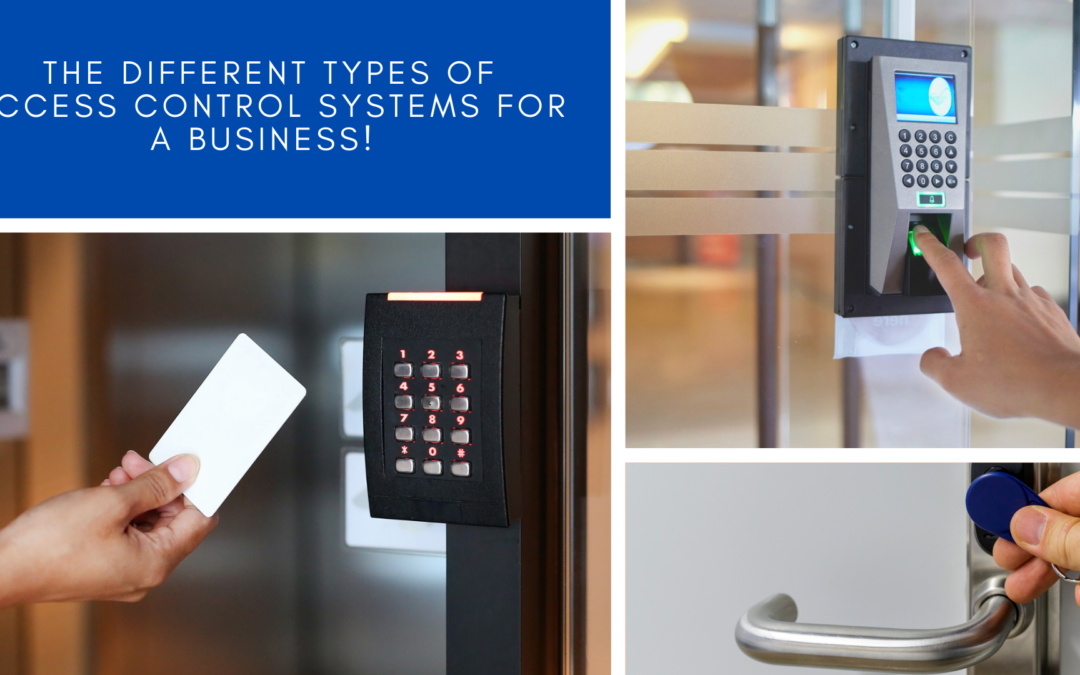Many different types of access control systems are available on the market today. However, choosing the right one for your business can be daunting. This article will provide you with a basic overview of the different types of access control systems and help you choose the best one for your needs.
Access control systems restrict entrance to and exit from buildings or other secured areas. They are commonly used in the business world to secure office buildings and other physical resources within a facility. However, understanding the different types of access control available can be confusing.
Types of Access Control Systems
Mandatory Access Control (MAC)
Mandatory access control is the best way to control your business or organization’s access limitations completely and permissions. Only the system owner or an authorized person (e.g., Chief Security Officer) can manage and change access settings with MAC. Additionally, it ensures that no system is bypassed and that person can only access the areas of the facility to which they have been given access.
When it comes to access control models, there is no one-size-fits-all solution. But mandatory access control is often the best choice for individuals who prioritize security and confidentiality. In addition, government and military institutions typically use this access control when data protection is essential. Finally, while it may require more initial set-up than other models, mandatory access control can provide peace of mind for businesses that handle sensitive information.
Discretionary Access Control (DAC)
Discretionary access control (DAC) is an important tool for managing access to data and resources. DAC allows department managers to create and manage their permissions and security restrictions rather than relying on security specialists. A company’s director typically grants this type of access control. The least restrictive type of access control is discretionary access control. It will offer department managers total control over who has access to their section.
DAC may be simple to use and have an intuitive interface; however, there are some drawbacks. One such drawback is that the system’s owner must be well-versed in security rules and best practices. DAC also has inherent vulnerabilities and limited negative authorization power. Therefore, using this system without industry-trained administrators puts your organization’s security at risk.
Role-based Access Control (RBAC)
With this nondiscretionary access control system, individual users’ access to a building is granted access depending on their roles or positions in the organization. Users’ privileges are determined by their authority, responsibility, and job competency. Predefined roles come with specific permissions, so that end users are granted the access they need to execute their job.
This type of access control is one of the most common due to its simplicity and reduced need for administrative work. In addition, by assigning predefined responsibilities to third-party users, RBAC makes incorporating them into your network easier.
Benefits of This System for Your Company
An access control system is an important tool for any business, large or small. By keeping track of who is coming and going, an access control system helps to prevent unauthorized access to your premises. It also allows you to monitor your employees’ movements, which can be especially important in businesses that operate on multiple shifts. Additionally, you can use the access control system to restrict access to certain areas of your facility that contain sensitive data or valuable/hazardous equipment.
Commercial Locksmith Near Me
In need of a reliable commercial locksmith in the DMV area? Look no further than MacArthur Locks & Doors. With years of experience in access control and locksmith services, our team is equipped to handle any project, big or small. So whether you need a new lock installation or key replacement, we are the company to call. Learn more about our services by visiting our website today.
